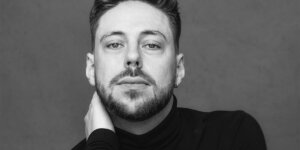Welcome to the second Friday Faculty Spotlight of September 2021. This week, our focus is on Associate Dean of ICPH Fairfax and Chair and Professor of Pharmacogenomics Arthur “Art” Harralson, Pharm.D., his work in the unique, cutting-edge, and growing field of pharmacogenomics and his research related to underserved populations. You’ll find out what has kept him teaching for four decades, and what inspires his research work. We hope you enjoy getting to know Dr. Harralson better!
Q: Your speciality is pharmacogenomics. For the uninitiated, what is pharmacogenomics?
It’s a relatively new field of science that is concerned with the way in which an individual’s genetic attributes affect their likely response to therapeutic drugs.
Q: How did you become involved in the field?
When I came to Shenandoah in 2002, a couple of pharmacy faculty, Robbie Kidd and Mark Johnson, were beginning to study how genomics affected warfarin dosing. They were sending samples out to determine the genotype, but because of my lab background, we decided to see if we could do the genotyping ourselves. We discovered that we could do the genotyping quite accurately and inexpensively and it greatly expanded the study and led to some very interesting connections.
Q: Are you still conducting research as part of the NIH National Institute on Minority Health and Health Disparities African American Cardiovascular Pharmacogenomics Consortium (ACCOuNT)? What are/were the goals of this research?
Yes, I’m still actively involved with the ACCOuNT Consortium. The goals of the consortium include searching for genetic variations in the African American population that affect how they respond to cardiovascular medications; to develop recommendations based on genetic variations that can be used in prescribing cardiovascular medications to patients; and to share information about precision medicine and pharmacogenomic research with other researchers, patients, and communities. The ACCOuNT database is one of the few genomic databases that contains high-level genomic information and patient-level information for African American patients. [The consortium is made up of researchers from Northwestern, University of Illinois, Stanford, The George Washington University, and SU]
Q: How much longer will the research continue?
The initial database is nearly complete and we have concluded recruiting additional patients. Because of the nature of the information, we will see continued research for many years to come.
Q: Have you conducted other genomic research related to underserved populations? If so, what has that work entailed?
Earlier in my career I was interested in why different populations sometimes respond to drugs differently. In the ’80s and ’90s that primarily involved pharmacokinetics, which is the science of how drugs move through the body, but within the last 20 years, there has been an emphasis on the genetic reasons for those differences.
Q: Why have you focused on the area of health disparities in your research?
My family is multiracial so racial and ethnic differences in the response to medication are of a concern to me personally. But even to this day, the bulk of research data that informs how drugs are best used in patients comes primarily from patients or subjects with a European genetic background. It’s beginning to change, and our research is playing a significant role in that change in the U.S.
Q: How long have you taught at Shenandoah?
I started at Shenandoah in August 2002, and this year is my 46th year of teaching. My career started at the University of Connecticut in 1976, followed by eight years with the University of California, and 17 years with the University of the Pacific. I’m now in my 20th year at SU.
Q: How does your research play into your role as an educator?
The things we are studying in the area of pharmacogenomics are shaping the informed use of medications in a profound way. Much of what we are learning from our research can be directly translated into patient care. It really reflects the future of medicine and the concept of personalized treatment.
Q: What keeps you engaged as an educator?
I think it’s working on the edge of understanding in an area of science and finding students that are as excited about that as I am. It’s still possible to discover things that were not previously known or understood. That’s exciting!




